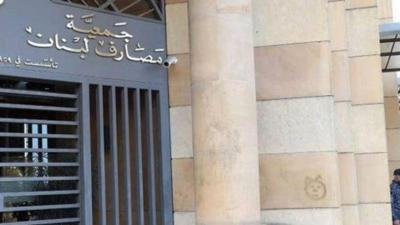No economy can be effective and productive without a strong banking sector; therefore, any recovery and reform plan must consider strengthening it, not the opposite. However, in any plan proposed to address the crisis, its primary goal tends to be "taking a bite" out of this sector. In this context, a draft law on bank restructuring mentions limiting the banking system to only 14 banks.
In this context, Nassef Ghabrial, Chief Economist at Bank of Beirut, explained through the "News Today" agency that no one can decide the number of banks in Lebanon, stating: "It is not true that there are 61 banks, but rather 46 banking groups. The rest are banking licenses related to investment institutions that belong to those banks."
When asked how many banks should remain in Lebanon, Ghabrial answered: "This is related to the assessment that will occur for the largest 14 banks, which represent around 80% of the sector, as part of the agreement between the state and the International Monetary Fund. Each bank will be evaluated individually based on its ability to continue and its future plans. Thus, no one can put a number for the banks today." He expressed his surprise regarding the sector's evaluation method, which addresses the distribution of estimated losses of $72 billion, after which it will be decided how many banks will remain, adding that this approach is not accurate. The evaluation of the mentioned 14 banks provides an idea of the sector’s reality.
He clarified that the banking sector has begun self-restructuring since the beginning of 2019, with deposits declining by about $47 billion, loans to the private sector decreasing by about $43.5 billion, and the number of branches (through mergers and closures) decreasing by about 227 branches, which is a 20% drop until March 2022. Additionally, the number of employees fell by about 26%, from 26,000 to 19,300 employees.
Ghabrial continued: "Banks have taken provisions on the Eurobonds they hold, meaning that most of their revenues go towards these provisions, whether on Eurobonds or loans to the private sector, and what remains is operational expenses." He added that the self-restructuring from this perspective has begun and is taking place, but there are two unclear aspects concerning the banks:
First: Negotiations with Eurobond holders have not yet started.
Second: The fate of deposit investments in the Central Bank, which is a key point, especially since the government's project (the recovery plan) considers them losses while they are actually debts and obligations on the state.
At this point, Ghabrial indicated that there are alternative proposals to this project, as it is not possible to load all losses on one side as if liquidating a company. He clarified that the state, according to the Currency and Credit Law, is responsible for recapitalizing the Central Bank as it is a public institution, questioning: "Why doesn’t it want to bear this responsibility?"
He believed that the government's plan would lead to converting 90% of deposits into shares in banks, highlighting that there are alternatives to that entire plan, which the economic bodies presented to Prime Minister Najib Mikati. Additionally, the Institute of International Finance suggested a list of measures that would allow depositors to gradually recover most of their deposits.
Ghabrial concluded by stating: "This determines the number of banks in the market and what methodology should be adopted for restructuring the sector. Is it a liquidation methodology, or a methodology to regain trust through measures that lead to fair distribution of losses without loading depositors the bulk of it?" He noted that supply, demand, and economic activity determine the size of any sector. When deposits were valued at $180 billion (before the crisis), this was the result of a certain economic movement, whereas today the pressures of the crisis have negatively affected this. In the future, the size of the economy and its dynamics, as well as import movements and investments, will determine the size of the sector.
He concluded: "Crises cannot be addressed through top-down methods!"




